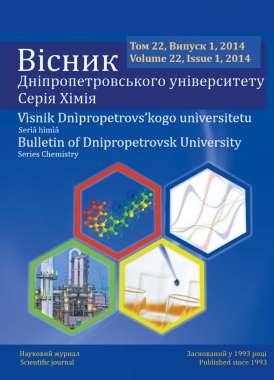Influence of the nature of surface-active substances on rheology of high-filled pastelike compositions on a base on liquid diene rubber and disperse filler
DOI:
https://doi.org/10.15421/081415Keywords:
high-filled pastelike compositions, liquid diene rubber, disperse filler, surface-active substances, polyoxypropylene, rheological propertiesAbstract
Results of researches on reception of pastelike high-filled compositions and estimation of their rheological properties with use cone – plate rheometer are presented. Liquid diene rubber with end hydroxyl groups (as binding), surfaceactive substance (PEAHENS) and disperse filler are entered into structure of compositions. The estimation of sedimentation firmness of compositions and their fluidity in the range of pressure of shift 1 – 30 кPа and temperatures from 30 to 50°С is executed. By results of an estimation of influence of concentration dependence of PEAHENS on a viscosity indicator it is shown that its introduction in a pastelike composition at level 0.5 mas. % is expedient. For considered in work low polar liquid diene rubber more effective decrease in viscosity of a pastelike composition provide polyoxypropylene, especially on the average an interval of pressure of shift which basically can be used in practice. Slightly concede them titanorganic derivatives of oligomer polyoxypropylene. The greatest effect of decrease in viscosity for compositions will reach at use oligomer polyoxypropylene with molecular weight 480, in this case viscosity of a composition is at level of 10 Pa ⋅ s for rather wide interval of pressure of shift.References
Bondarenko, S. G., Horolski, P. G., Аdamchik, L. V. To an estimation of power weight efficiency of rocket engines on pastelike fuel with deep choking. Aviatsionno kosmicheskaya tekhnika i tekhnologiya. – 2008, no.7, P. 148–150. [in Russian]
Ivanchenko, A. N., Bondarenko, S. G. Working out condition of chocing rocket propultion installations on unitary pastelike propellant. Problemi visokotemperaturnoi techniki, 2007, P.40–50. [in Russian]
Bondarenko, S. G., Eliseev, V. I., Protsan, Yu. V. Rocket propulsion using unitary paste-like propellant. Experimental investigation of paste-like propellant and results of PRM fire tests. Prog. of 61-th International Astronautical Congress (IAC-10.C44.1.9.). Prague. Czech Republic, 2010, P. 27.
Ivanchenko, A. M. Features of rocket propultion installation on pastelike propellant. Kosmichna nauka i tekhnolohiya, 1999, vol. 5, no. 4, P. 3–10. [in Ukrainian]
Uriev, N. B. Vusokokontcenrirovannie dispersnie sistemi. Мoskow: Khimiya, 1980, 356 p. [in Russian]
Tretiakov, K. O., Potupa, O. V., Oginski S.G., Kurochkin, A. F., Surovtcev, А. B. Dependence of rheological characteristics of pastelike rocket propellant from dispersion of filler, concentration of filler and PEAHENS. Vopr. Khim. Khim. Tekhnol., 2006, no. 3, P. 158–163. [in Ukrainian]
Mogilevich, M. M., Turov, B. S., Morozov, Yu. L, Ustavshikov, B. F. Zhidkiye uglevodorodnyye kauchuki. Мoscow: Khimiya, 1983, 200 p. [in Russian]
Kurochkin, A. F., Dolmatova, N. V., Surovtcev, А. B. High-filled compositions on the base on olygomeric rubber. All materials. Encyclopaedic reference book, Мoscow: Science and technology, 2011, no. 1, P. 35–40. [in Russian]
Downloads
Published
Issue
Section
License
Copyright (c) 2014 Oles Honchar Dnipropetrovsk National University

This work is licensed under a Creative Commons Attribution 4.0 International License.
- Authors reserve the right of attribution for the submitted manuscript, while transferring to the Journal the right to publish the article under the Creative Commons Attribution License. This license allows free distribution of the published work under the condition of proper attribution of the original authors and the initial publication source (i.e. the Journal)
- Authors have the right to enter into separate agreements for additional non-exclusive distribution of the work in the form it was published in the Journal (such as publishing the article on the institutional website or as a part of a monograph), provided the original publication in this Journal is properly referenced
- The Journal allows and encourages online publication of the manuscripts (such as on personal web pages), even when such a manuscript is still under editorial consideration, since it allows for a productive scientific discussion and better citation dynamics (see The Effect of Open Access).


